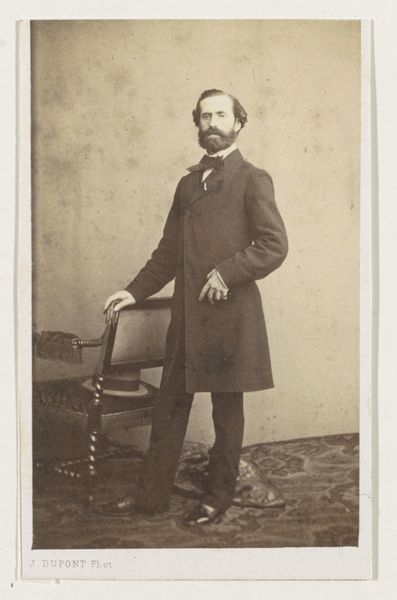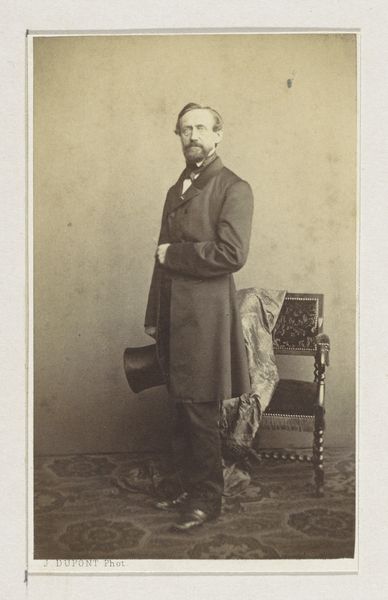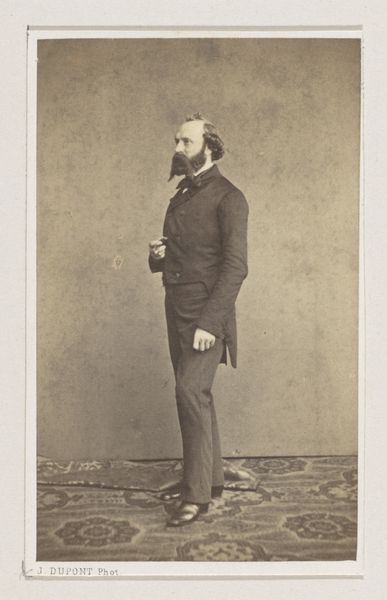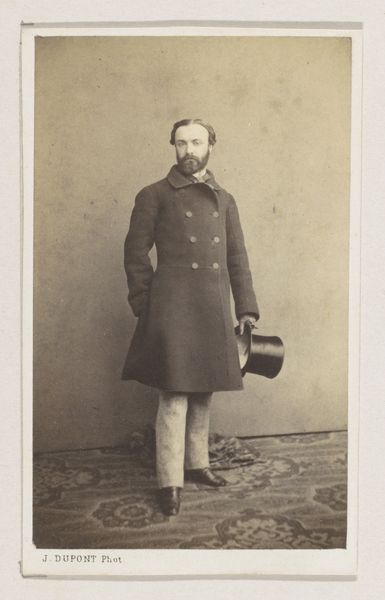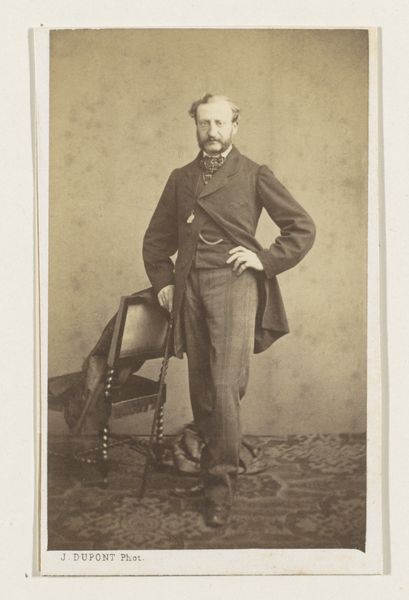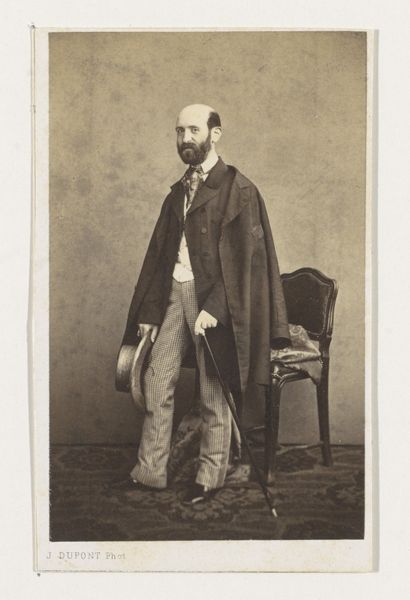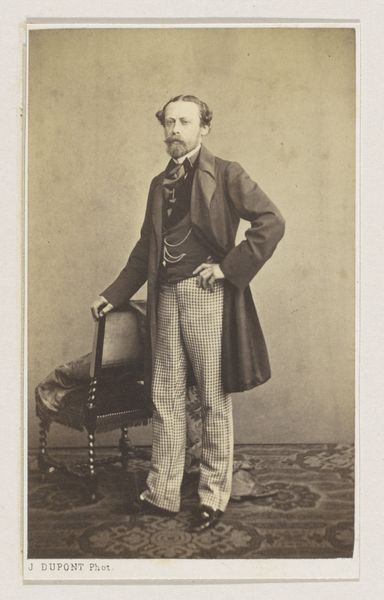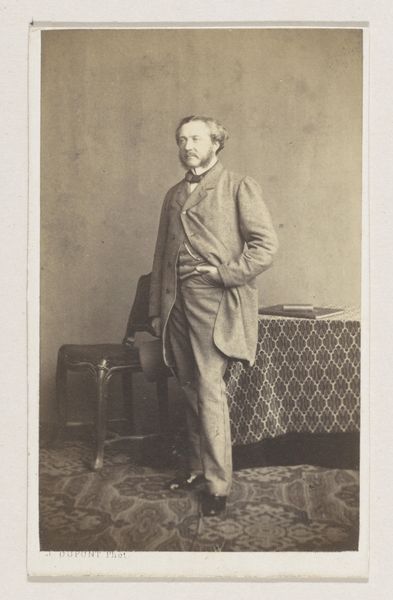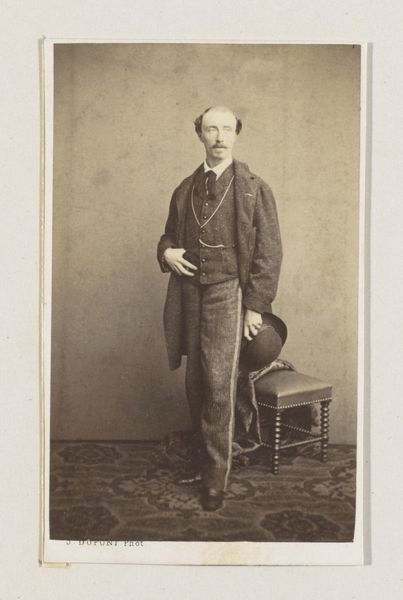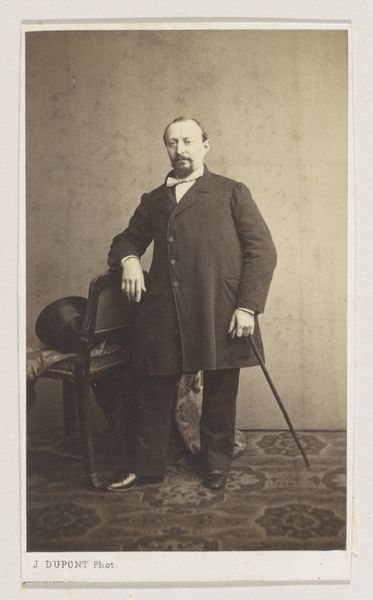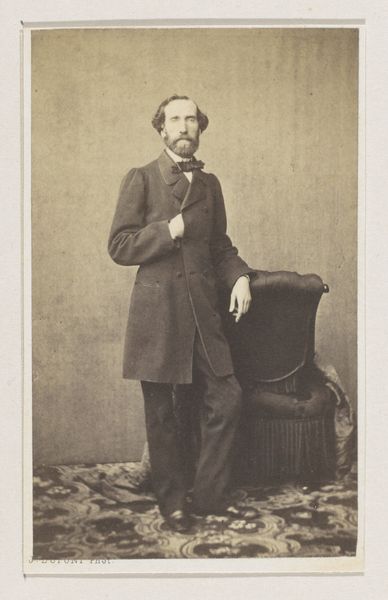
Dimensions: height 101 mm, width 62 mm
Copyright: Rijks Museum: Open Domain
Editor: This is a photograph titled "Portret van de schilder Lodewijk Jan de Taeye, ten voeten uit," or "Portrait of the painter Lodewijk Jan de Taeye, full-length," taken in 1861 by Joseph Dupont using the gelatin-silver print method. The subject, a painter, appears posed and somewhat contemplative. What stands out to you about this image, and how do you interpret it within its historical context? Curator: This photograph provides a fascinating glimpse into the construction of artistic identity in the mid-19th century. Notice how de Taeye is staged. His posture, clothing, even the cigarette, all speak to a carefully curated persona, that of the bourgeois artist. How does this image play into broader narratives about male artists and societal expectations of men during that time? Editor: That's interesting, I didn't consider the staging. So, this image could be a comment on the artist's role or image at the time? Curator: Precisely. Dupont’s photograph presents an interesting study of performativity. He leans casually, with a cigarette—small details that reinforced a certain vision of masculinity, a figure positioned between labor and leisure. Think about the other visual cues of the era, and how de Taeye chooses to align himself. What does that choice communicate about the social and artistic climate of Belgium at that time? Editor: I see your point. It definitely appears like he’s aware of how he wants to be perceived. The trappings of middle-class life seem very important here. Curator: Yes, and the fact that a photographer, like Dupont, is involved is also significant. How is the role of the photographer as a maker of meaning intertwined with de Taeye’s artistic expression and identity? Whose perspective is dominant here? The subject or the author? Editor: It's almost a collaboration, both shaping an artistic presence for posterity. I hadn’t really considered all of these layers when I first looked at it. Curator: Exactly! It really emphasizes the complex, intersecting layers that inform our understanding of the piece.
Comments
No comments
Be the first to comment and join the conversation on the ultimate creative platform.

